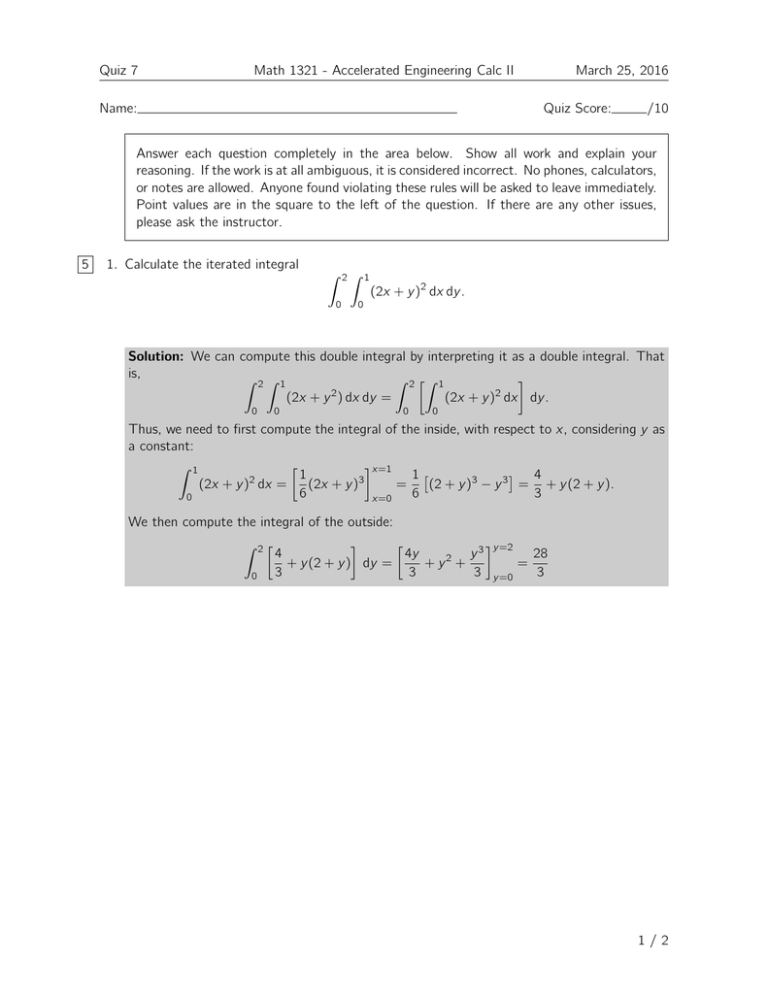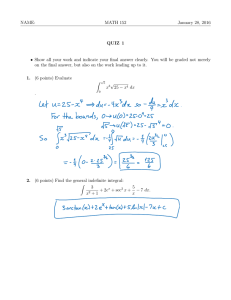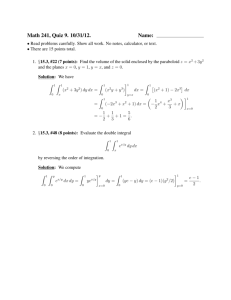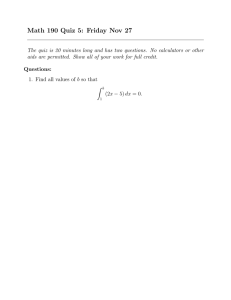Quiz 7 Math 1321 - Accelerated Engineering Calc II March 25, 2016 Name:
advertisement

Quiz 7 Math 1321 - Accelerated Engineering Calc II Name: March 25, 2016 Quiz Score: /10 Answer each question completely in the area below. Show all work and explain your reasoning. If the work is at all ambiguous, it is considered incorrect. No phones, calculators, or notes are allowed. Anyone found violating these rules will be asked to leave immediately. Point values are in the square to the left of the question. If there are any other issues, please ask the instructor. 5 1. Calculate the iterated integral Z 0 2Z 1 (2x + y )2 dx dy . 0 Solution: We can compute this double integral by interpreting it as a double integral. That is, Z 2Z 1 Z 2 Z 1 2 2 (2x + y ) dx dy = (2x + y ) dx dy . 0 0 0 0 Thus, we need to first compute the integral of the inside, with respect to x, considering y as a constant: x=1 Z 1 4 1 1 2 3 = (2x + y ) dx = (2x + y ) (2 + y )3 − y 3 = + y (2 + y ). 6 6 3 0 x=0 We then compute the integral of the outside: Z 0 2 y =2 4y y3 28 4 2 + y (2 + y ) dy = +y + = 3 3 3 y =0 3 1/2 Quiz 7 5 Math 1321 - Accelerated Engineering Calc II March 25, 2016 2. Consider the following double integral: ZZ Z f (x, y ) dA 1Z x = (1 + 2y ) dy dx. D 0 x2 Draw the region D this integral corresponds to. Solution: To interpret this region, we first see that it is of type 1, meaning we’re given x-dependent bounds on y . Specifically, we see that the bottom of y is specified by y = x 2 , a parabola, and the top of y is specified from y = x. Thus, we have the regions between these two plots. From there, we just see that we only care about the range from x = 0 to x = 1, resulting in the picture: 1.2 1.0 0.8 y =x 0.6 y = x2 0.4 0.2 0.2 0.4 0.6 0.8 1.0 1.2 2/2






